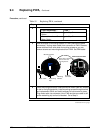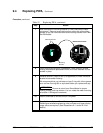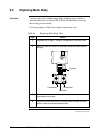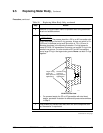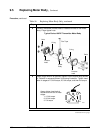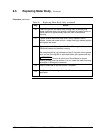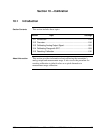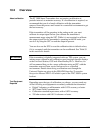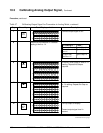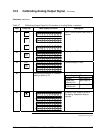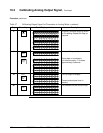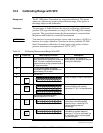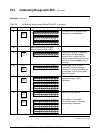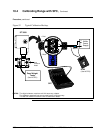
ST 3000 Release 300 and SFC Model STS103 User’s Manual 6/08
184
10.2 Overview
About calibration
The ST 3000 Smart Transmitter does not require recalibration at
periodic intervals to maintain accuracy. If a recalibration is required, we
recommend that you do a bench calibration with the transmitter
removed from the process and located in a controlled environment to get
the best accuracy.
If the transmitter will be operating in the analog mode, you must
calibrate its output signal before you calibrate the transmitter’s
measurement range using the SFC. While it is not required to calibrate
the output signal first for transmitter's operating in the DE mode, you
can do it by using the SFC to read the output in percent.
You can also use the SFC to reset the calibration data to default values,
if it is corrupted, until the transmitter can be recalibrated. See Table 59
in this section for details.
ATTENTION
If the transmitter is digitally integrated with our TPS system, you can
initiate range calibration and calibration reset functions through displays
at the Universal Station, GUS and Allen-Bradley PLCs. However, we
still recommend that you do a range calibration using an SFC with the
transmitter removed from service and moved to a controlled
environment. Details about doing a calibration reset through the
Universal Station are given in the PM/APM Smartline Transmitter
Integration Manual PM12-410 which is part of the TDC 3000
X
system
bookset.
Test Equipment
Required
Depending upon the type of calibration you choose, you may need any
of the following test equipment to accurately calibrate the transmitter:
• Digital Voltmeter or milliammeter with 0.02% accuracy or better
• SFC Smart Field Communicator
•
Calibration-standard input source with a 0.02% accuracy
•
250 ohm resistor with 0.01% tolerance or better.



